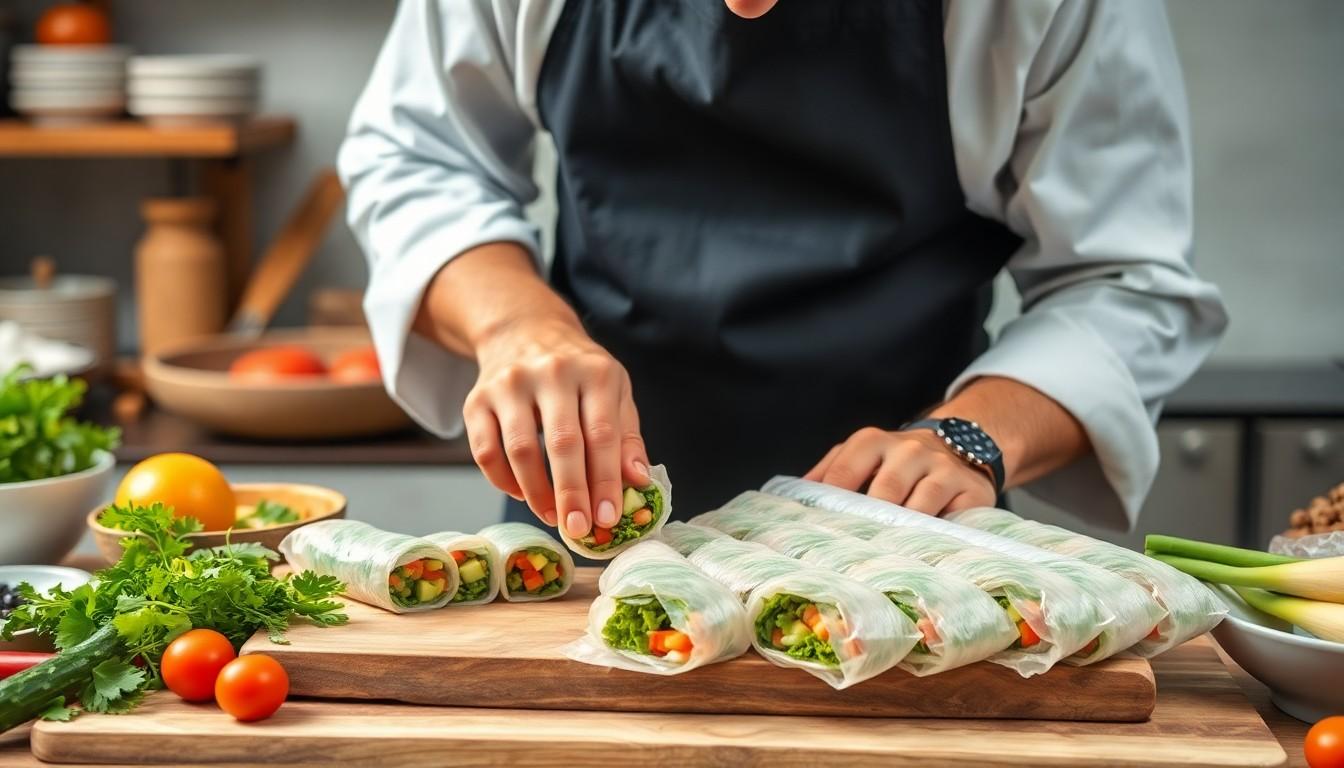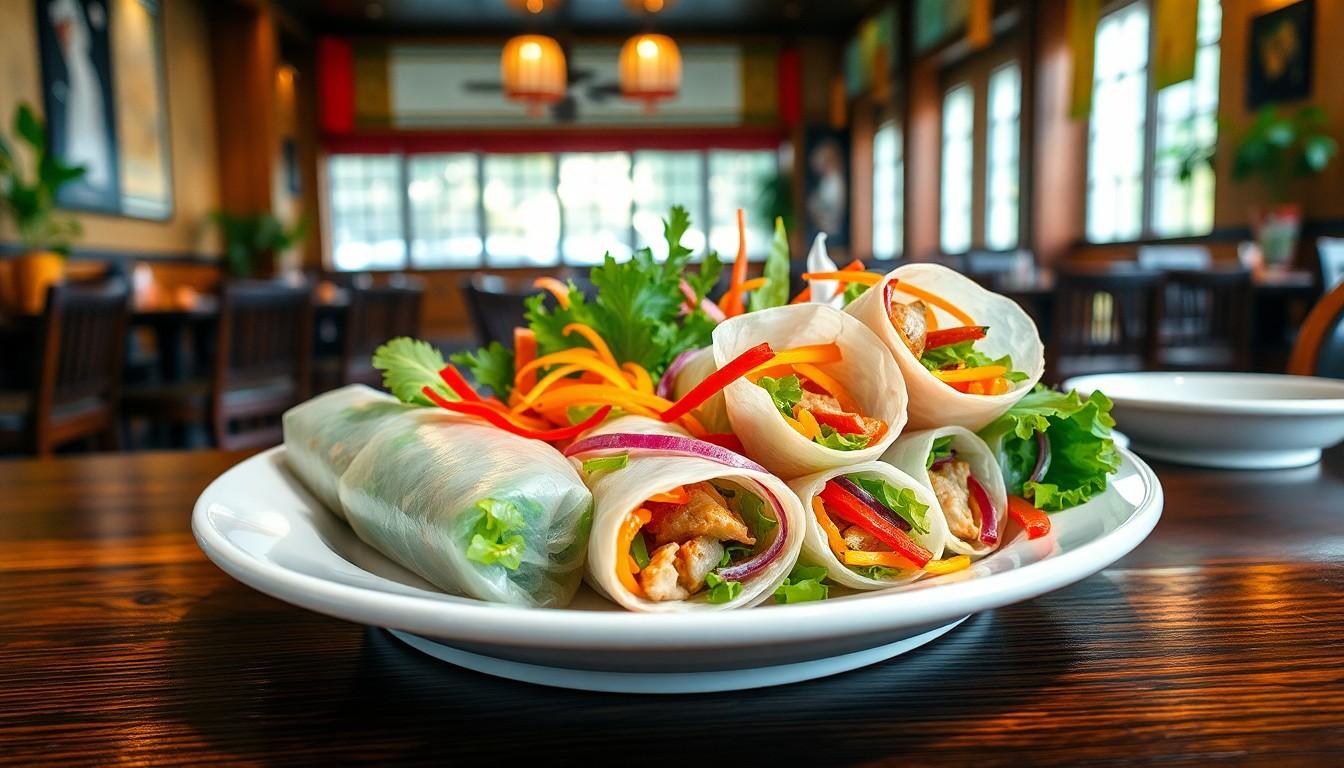Ever wondered why cuonbumi seems to have a price tag that could make a small fortune blush? This delicacy isn’t just a treat for the taste buds; it’s a culinary masterpiece that takes time, effort, and a sprinkle of magic to create. Think of it as the high-maintenance celebrity of the food world—glamorous, rare, and always in demand.
What Is Cuonbumi?
Cuonbumi represents an intricate culinary dish originating from Vietnam. This specialty combines fresh ingredients, such as rice paper, herbs, and meats, creating a unique flavor profile. Diners experience both a visual and taste sensation that makes cuonbumi stand out in the culinary landscape.
Preparation of cuonbumi demands precision and skill. Chefs often spend hours perfecting their techniques, ensuring each roll achieves the right balance of texture and taste. Ingredients must remain fresh and of high quality, contributing to the overall experience. This meticulous crafting process means that cuonbumi requires more than just cooking; it requires an artistic touch.
Rarity contributes significantly to its expense. Not every dining establishment offers cuonbumi, limiting its availability. Many restaurants that do serve the dish pride themselves on sourcing authentic ingredients, often leading to higher prices. Diners ready to indulge in cuonbumi often seek out specialized venues, elevating its status to that of a sought-after delicacy.
Culinary enthusiasts often regard cuonbumi as a must-try item, reinforcing its glamour within food culture. Various regions may put their twist on the dish, introducing unique variations that reflect local tastes. This adaptability invites both culinary experimentation and ongoing interest in cuonbumi, keeping it relevant across different dining contexts.
Overall, cuonbumi symbolizes the dedication and creativity present in Vietnamese cuisine. Its high price reflects not only the quality of ingredients but also the labor-intensive preparation processes involved in crafting each exquisite roll.
Factors Contributing to the Cost of Cuonbumi

Cuonbumi’s price reflects several key factors that elevate it beyond the ordinary. The intricate process of creation involves meticulous steps, from preparation to final assembly.
Production Costs
Production costs significantly influence cuonbumi’s retail price. Crafting each roll involves extensive time and skill, demanding precision at every stage. Chefs often commit hours to ensure the right balance of flavors and textures. Equipment and techniques play a pivotal role, as specialized tools can add to overhead expenses. Labor-intensive processes combined with the need for consistency increase the overall costs associated with this dish.
Sourcing Quality Ingredients
Sourcing quality ingredients enhances the uniqueness of cuonbumi and contributes to its high price. Authentic rice paper, fresh herbs, and expertly chosen meats result in superior taste. Restaurants prioritize ingredient quality, often collaborating with local farmers and importers to find the best products. Seasonal availability adds a layer of complexity, as the fluctuations in yields can influence pricing. Overall, the commitment to maintaining high-quality standards directly impacts the final cost of each roll served.
Market Demand for Cuonbumi
Market demand for cuonbumi reflects its high culinary appeal and cultural value. Enthusiasts seek this exquisite dish for its unique blend of fresh ingredients and flavors.
Cultural Significance
Cultural significance enhances cuonbumi’s popularity and expense. It represents traditional Vietnamese cuisine, showcasing local craftsmanship through intricate preparation methods. Community celebrations and gatherings feature cuonbumi as a symbol of hospitality. Certain regions claim ownership of distinctive recipes, further elevating the dish’s status. Chefs master traditional techniques and ingredient sourcing, adding authenticity and pride to each serving. As culinary tourism grows, tourists specifically seek out authentic Vietnamese experiences, promoting cuonbumi’s demand. The combination of cultural heritage and artistic presentation ensures cuonbumi remains a highly sought-after dish.
Trendy Appeal
Trendy appeal drives a surge in demand for cuonbumi among younger generations. Social media influences and food bloggers showcase its vibrant presentation, attracting a wider audience. Unique variations and fusion recipes catch the interest of adventurous diners, creating excitement around this traditional dish. Restaurants often reinvent cuonbumi with modern twists, introducing flavors or techniques that appeal to contemporary tastes. This constant innovation positions cuonbumi as a fashionable dining choice in urban areas. Seasonal ingredients enhance the dish’s appeal while keeping it relevant in culinary discussions. As the food scene evolves, cuonbumi stays at the forefront, maintaining high demand and correspondingly elevated prices.
Comparisons with Similar Products
Cuonbumi stands out among various similar Vietnamese dishes, drawing attention for its elaborate preparation and refined ingredients. Unlike traditional spring rolls that often involve simpler fillings, cuonbumi features a combination of fresh herbs, diverse meats, and high-quality rice paper, emphasizing its sophisticated flavor profile.
Compared to pho, another famous Vietnamese dish, cuonbumi requires more hands-on preparation. Pho relies on a well-crafted broth, while cuonbumi’s intricacy lies in the artistic assembly of its ingredients. Preparation time for cuonbumi significantly exceeds that of pho, showcasing the labor-intensive techniques chefs utilize to achieve the perfect roll.
Banh xeo, or Vietnamese pancakes, also bear a resemblance, yet cuonbumi possesses a unique charm with its fresh components and visual appeal. Many people appreciate how food bloggers highlight its presentation on social media, propelling its popularity. Chefs creatively reinvent cuonbumi with modern twists, differentiating it from other traditional offerings.
Culinary enthusiasts often compare cuonbumi to sushi rolls, primarily due to the rolling technique. However, sushi typically utilizes vinegared rice and raw fish, while cuonbumi showcases fresh herbs and cooked proteins. The sourcing of ingredients, particularly for cuonbumi, prioritizes quality, further justifying its higher price point.
Market demand plays a vital role in pricing comparisons as well. Cuonbumi’s cultural significance, combined with culinary tourism’s growth, positions it as a delicacy worth trying. As chefs innovate and incorporate local flavors, cuonbumi’s appeal continues to rise, making it a desirable and expensive option in the Vietnamese cuisine landscape.
Conclusion
Cuonbumi stands out as a culinary treasure that reflects the artistry and dedication of Vietnamese cuisine. Its intricate preparation process and the focus on high-quality, authentic ingredients justify its elevated price. As demand grows among food enthusiasts and tourists alike, cuonbumi’s allure only intensifies. The combination of cultural significance, innovative presentations, and the effort invested in each roll ensures that this dish remains a luxurious choice for those seeking an unforgettable dining experience. Ultimately, cuonbumi isn’t just a meal; it’s a celebration of flavor and craftsmanship that captivates the palate and the senses.




